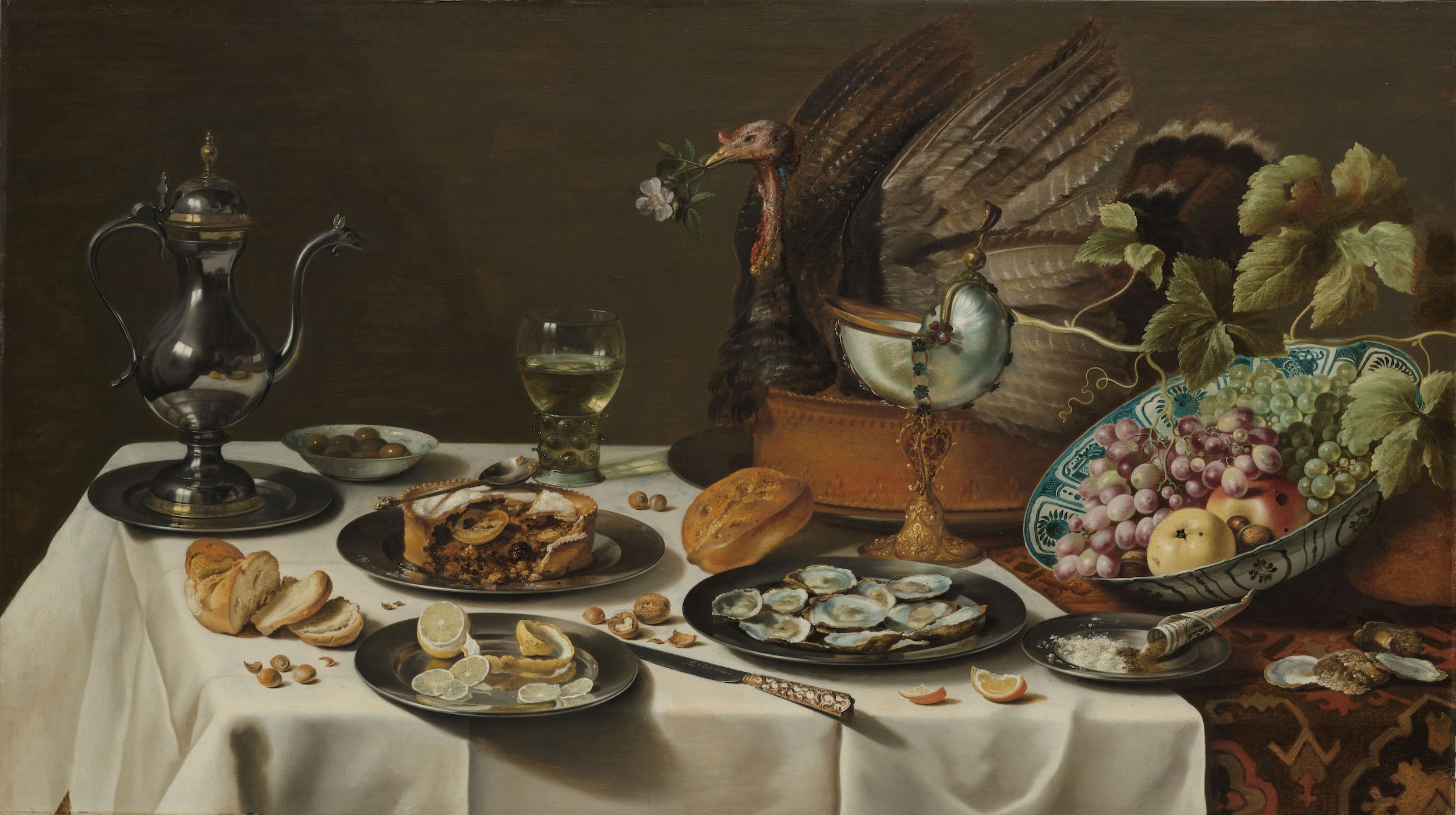Many of the works in the Rijksmuseum's collection have links to the slavery past. Often, you won’t notice these connections at first glance or find out about them from the museum label. But recently the Rijksmuseum, thanks to which we present today's work, started to highlight these relationships, which often uncover unexpected facts (as in today's work).
The Flemish painter Pieter Claesz was just one of many artists who emigrated to the Northern Netherlands in the beginning of the 17th century. This table abounds with luxurious products, among them Asian objects. Especially eye-catching are the porcelain plate and the nautilus shell. Even in unexpected objects the presence of Asia is implicit, as in savory pies, which contain ingredients such as cinnamon, mace, cloves, and ginger.
The spices used in this pie were obtained by the Dutch East India Company (VOC), often through violence and slavery. Nutmeg, for example, came from the Banda Islands, part of the Maluku Archipelago. The Dutch took these islands by force in 1621. Enslaved people had to cultivate and harvest the nutmeg.
P.S. Here is a fascinating story of Chinese porcelain in still lifes of the Dutch Golden Age. <3
P.P.S. Claesz's works are spectacular. If you would like to have something as spectacular on your wall, check out our DailyArt prints, printed in super high quality.


 Pieter Claesz
Pieter Claesz